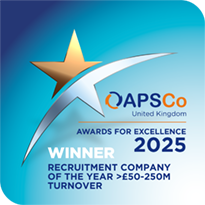It’s been 12 months since HMRC rolled out the IR35 Private Sector reform for employing contractors. We recap on what IR35 means for businesses, and how they should be approaching it in their contingent workforce.
How does IR35 work?
It’s a way for HMRC to distinguish between what they classify as a true Limited Company off-payroll worker and a disguised employee. End Clients, who the worker is ultimately delivering the service to, are required to undertake Status Determination Statements (SDS) for each worker assignment they plan to engage as a Limited Company (or Personal Service Company) worker. Assessing assignments against a range of criteria to determine the correct working arrangement for tax purposes. This can include utilising HMRC’s Check Employment Status for Tax (CEST) online tool, although it is not a legal requirement.
It's important though to remember that the assessment should be done on each worker assignment and not each worker as an individual. Every contractual interaction an organisation has with a temporarily engaged worker is classed as a new assignment, and will need an independent SDS.
What does the Status Determination Statement demonstrate?
It’s looking at whether HMRC would deem the working arrangement and relationship as In Scope or Out of Scope in line with the IR35 rules. Where it is deemed In Scope then the assignment is too similar to that of a directly engaged permanent member of the team - a disguised employee. So HMRC determine the worker should be subject to Income Tax and National Insurance contributions at the source of payment. Where the assignment is evaluated as Out of Scope, the worker can continue to operate through their Limited Company, and they remain responsible for managing their own tax in line with the usual self-employment practices.
What options do workers have when they are In Scope?
There are a few different options available that workers can choose to engage through, including a PAYE payroll, such as the one NRL manages, or working through an Umbrella company. Or workers can decide to continue working through their Limited Company and instead opt for deemed payments to cover the tax and National Insurance requirements. As IR35 status is assessed on each assignment undertaken and workers will often have multiple assignments within each tax year, it may be more convenient to continue to operate through a Limited Company.
How long does an SDS typically last?
This is an interesting question, technically it lasts for the length of the assignment. But for longer assignments it’s best to revisit the SDS outcome at regular intervals to check that the day-to-day working practices in place continue to reflect an Out of Scope arrangement. Don’t forget that the intended purpose for the legislation is to identify those workers who are in fact too similar to directly engaged workers. So a longer assignment length provides a greater risk that working practices become too aligned with how the permanent workforce operates. Keep an eye out for changes such as requesting annual leave in advance from the client’s management contact, or workers being given computer and email equipment from the client’s IT departments. These can trigger a need to reassess the SDS.
Should End Clients be auditing their supply chain for IR35?
In most typical engagement relationships, it is the responsibility for the End Client to determine the IR35 status of workers – although in practice it is usually their recruitment agency or intermediary who is tasked with managing the deductions as the Fee Payer.
This means it’s more important than ever to ensure a clear and transparent process is in place to manage the supply chain and payroll working rules, checking that IR35 status determinations are being effectively managed within the contractor workforce. It also provides a good opportunity to evaluate where internal processes to notify the supply chain of any material changes are successfully put in place.
The Workforce Management experts at Linx, also part of the NRL Group, work with organisations to develop a detailed auditing process to evaluate compliance across the supply chain – providing practical support and guidance to ensure IR35 is effectively managed.
Related Articles
| How to determine IR35 status effectively |
| What IR35 means for recruitment compliance |
| Countdown to IR35... one month to go |
| Countdown to IR35... two months to go |


.png)


.png)


